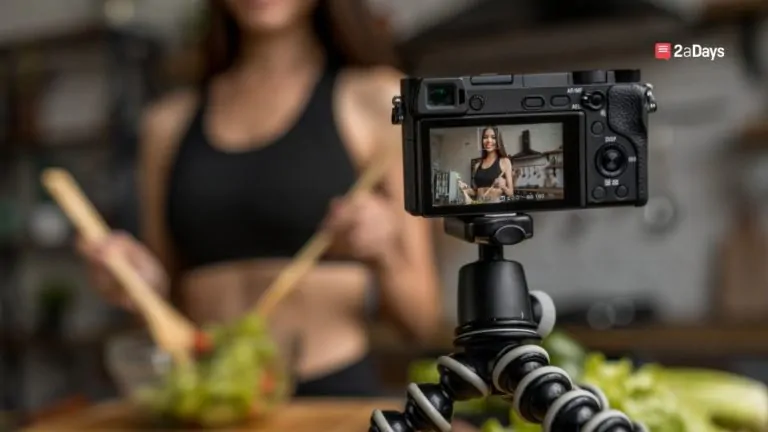Content Warning: Eating disorders
Athletes, especially in college, are expected to maintain optimal physical fitness. This includes having a proper workout routine, nutritional habits, and mental state. Female athletes face all of these pressures, along with the pressures from society that outline the ideal appearance and dictate what an “attractive” woman looks like. They are being told by their coaches to get stronger and faster, while being told by societal standards to be skinny and feminine. The body image pressures put on female athletes are contradictory and finding the ability to love your body can be hard when you are constantly reminded of how it “should” look.
Picture this: your coach sits you down and says that if you want a starting position next season, you need to get faster. You need to spend the next few months doing whatever it takes to improve your speed or you will be stuck on the bench, again. So you leave, inevitably unhappy with your body and its performance ability.
Related: Rate your Coaches, Facilities, and Campus Visits
At the same time: you're looking at social media and all you see are super skinny girls with big butts and tiny waists. You go on to TikTok and see “What I Eat in a Day” videos in which that girl's entire day of eating consists of the equivalent to your post workout snack. This seems to be a glaring reminder that you eat a lot more than these girls and that you don't mirror their picture-perfect bodies. So you put down your phone, inevitably unhappy with your body and how it looks and what it eats.
But in your mind, there is a solution to both: adjust your body and adjust your eating habits. If you lose weight and get smaller, you'll be lighter and faster. You will start eating what TikTok shows you is normal and maybe you'll finally look like the girls you see on Instagram. So, you start eating a bit less and working out more. Then, these adjustments grow more drastic until you have completely altered your relationship with food and your body. Then, like so many female athletes, you find yourself developing an eating disorder.
Related: Identifying Overlooked Eating Disorders in College Athletes
Eating disorders take on many different forms and do not all involve eating less or working out more. Eating disorders, by definition, are characterized by abnormal or disturbed eating habits. They can be glaringly obvious or completely disguiseable, and have a range of different impacts on one's body. A female athlete may look in the mirror and see her muscles as masculine and see her body as too bulky, so she may compensate by purging or restricting her caloric intake. Or, an athlete may start working out excessively in order to achieve better performance capabilities, but do so in an obsessive manner that is detrimental to their physical and mental states. Regardless of the type or category, eating disorders reflect an unhealthy relationship with food that is alarmingly prevalent amongst female athletes.
A study of NCAA Division I athletes showed that one in three female athletes are at risk for an eating disorder. For many female athletes, the desire to monitor what they eat for performance can develop into an obsession. The personality traits of high level athletes- perfectionism, determination, compulsiveness- can also make them more susceptible to eating disorders. Sports that have a desired aesthetic for its athletes can encourage these habits. Additionally, studies have shown that female athletes competing in endurance or weight-dependent sports are increasingly more likely to develop these issues. For example, track/cross country and swimming tend to associate a lower body weight with a competitive advantage. Body dissatisfaction is also often triggered by comparing one's body to someone else, which is very common amongst female athletes. They compare their weight, look, and body fat percentage to their teammates and competitors which can lead to negative perceptions of their own body. A 2016 study revealed that in the US, female runners are less satisfied with their body which was linked to an increased risk of eating disorders.
Related: Former George Washington Track & Field Athlete | My Struggle With an Eating Disorder and My Recovery
Eating disorders can oftentimes be exacerbated or encouraged by coaches. A player who, at a young age, is told to lose weight to be a better athlete is more likely to develop an eating disorder. Fat shaming is a real and unfortunate occurrence within many teams in which coaches encourage weight loss as a way to become a better athlete. Unhealthy discussions about food and dieting amongst teammates can also be dangerous and encourage abnormal habits. Comparing bodies against your teammates, discussing your dieting strategies, or praising other athletes for losing weight can trigger dangerous responses when discussed in a team setting. Athletes begin to associate losing weight or restrictive diets with success, thus using their role as an athlete as an impetus for disordered eating.
Come back next week for Part Two: 19 Warning Signs of Eating Disorders in Female Athletes and How They Can Combat Them.
Have an idea for a story or a question you need answered? Want to set up an interview with us? Email us at [email protected]
* Originally published on May 20, 2022, by Stephanie O'Brien







